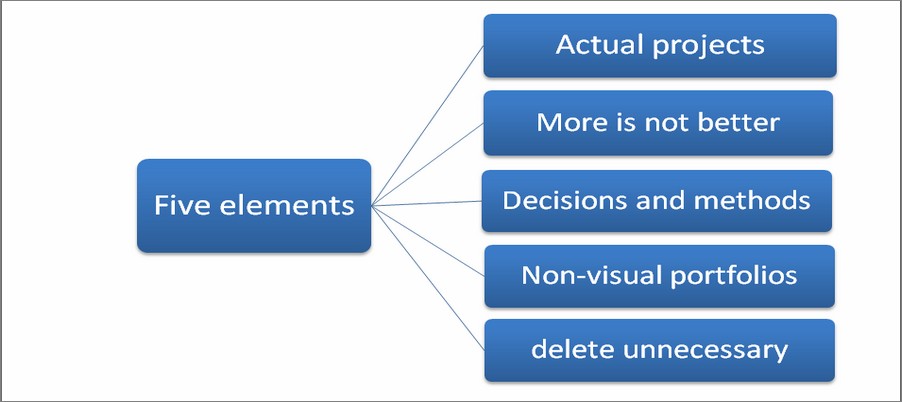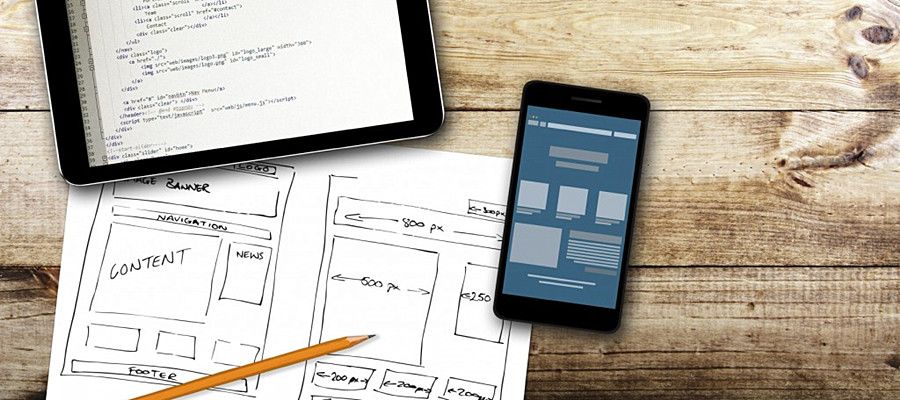Recently, I have experienced lots of interactive design interviews. It made me profoundly realize that the company's requirements for interaction designer vary depending on the scale of companies. And each company pays different attention to the interaction design portfolio. So I’ve been keeping thinking after my interviews. What kind of interactive design portfolio does an interviewer want to see? And in which way portfolios should be displayed? Here I'd like to introduce 5 elements of portfolios and how to well prepare it from my own interview experience.
Five elements of portfolios

1. Actual project capabilities.
The companies lay more emphasis on your actual project capabilities. Although I prepared a dozen of interaction design portfolios for my interviews. To my surprise, some companies would rather let me give a detailed introduction of a project that I have participated in than see my portfolios. The interviewer didn't even see any other of my projects, not to mention some design exercises. Why are interviewers not willing to see portfolios? I think there are 2 reasons.
a. the interview time is limited, so it is impossible for them to get a thorough understanding of your portfolios.
Thus they have to test your design skills through one of your works, judging whether you are in accordance with their expectations.
b. the bigger a company is, the more branches it has. Also, the standardization and accuracy of design expression and communication are becoming particularly important.
Another advantage of the actual project is that it helps you verify the rationality and integrity of your design. We all know that designers redraw their works frequently. So we need to think about the problems of our design plan over and over again and adjust it constantly in this process.

2. More is not better
A number of people claim that the interaction design portfolios are the more the better, for it is able to show their excellent work experience and design abilities. However, for graduate students, they don’t have many design works. Although they do have a short internship period and have to do some simple jobs, it is actually hard to show their competence.
It is universally acknowledged by many interviewers as well. So what we need to do is improve the quality of existing works as much as possible by constant beautification and optimization. If you are capable of optimizing a work repeatedly, there is no doubt that it will be better and better, which is likely to become an excellent design catering to interviewers’ expectations. Do your utmost to perfect one of your works with your amazing skills, ideas, and logic thinking so as to enable others to have an accurate (or even slightly higher) assessment of your abilities. It is better to spend one day selling a year's paintings rather than spend a year selling a day’s pictures.
3. Design decisions and methods
Compared with the information architecture, usage processes, and interaction prototypes, what interviewers really pay attention to is design methods and trade-offs of these issues.It once happened to me. We like to put our focus on product positioning and function, and interaction design and prototypes when creating portfolios and spend a lot of time on introduction, which may seem to be beautiful and exquisite but not in line with the focus of interaction designers. There are 2 points interactive designers really concern.
a.The logic thinking of product’s functions: It enables different users to complete their tasks without barriers.
b. The information interactive designers want to deliver on pages and the importance and relationship of that information.
Therefore, we are supposed to not only display our design results but also come up with a solution, helping different users solve problems based on our design plans. An interaction design portfolio like this can be seen as a complete, visual one.

4. Preparation of non-visual portfolios.
In an interview, the display of portfolios you give is only an introduction to the interview and more portfolios can be displayed through the communication with the interviewers. Thus, the preparation of the interaction design portfolio will not finish until you officially join the company. In regard to the preparation of the non-visual portfolios, designers can show they ideas and choices through the simulation of different scenes.
Every design plan is meaningful only in the corresponding scene. Conversely, design plans which are far away from users and not in accordance with scenes are nonsense. Therefore, designers are supposed to prepare well for design features in different user scenarios as well as different purposes of designs for the sake of understanding the logic and decision of works, which can be regarded as a complete interaction design portfolio.
5. Learn to give up
Most of design-related graduates are accustomed to putting all works into their portfolios. However, they don’t realize that some works fail to serve you well in an interview, but tend to be detrimental to your performance in interview. So designers ought to give up some rough works without any features and thinking style.
The core of the interview is to judge whether you have an ability to do a job well or how is your work performance. It's the same with portfolios which seem to be a complement to your two skills. But the interaction design portfolio should not only demonstrate your design work but also the process of completing the tasks. Only in this way, can your design be convincing enough and fully show your real abilities.
More Articles:
评论
发表评论